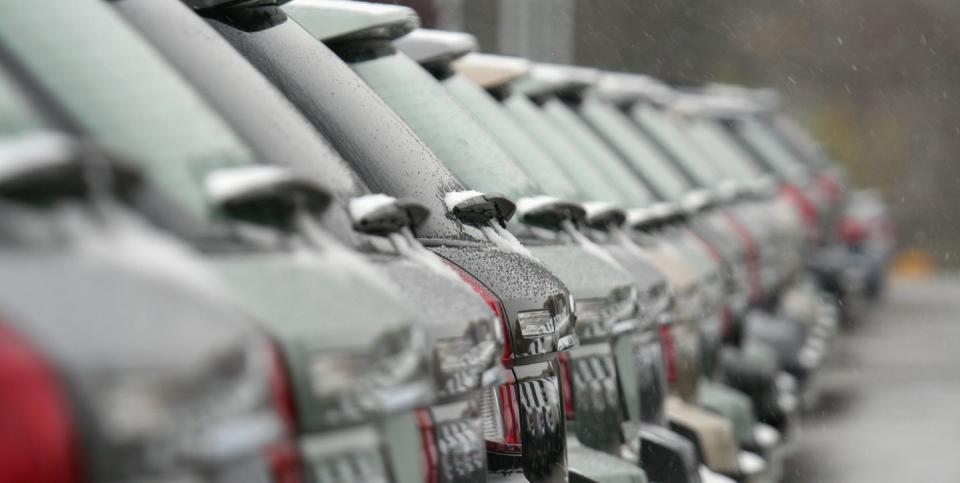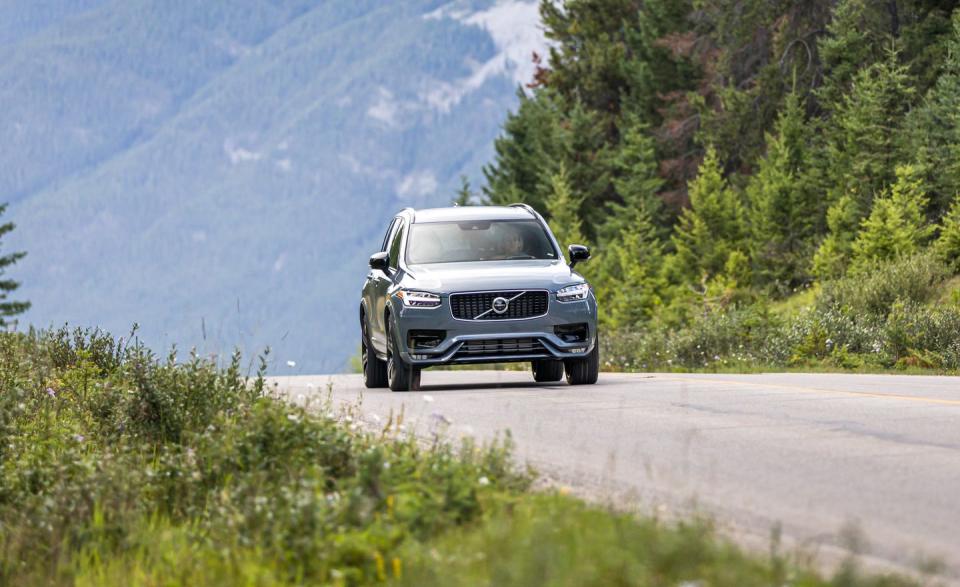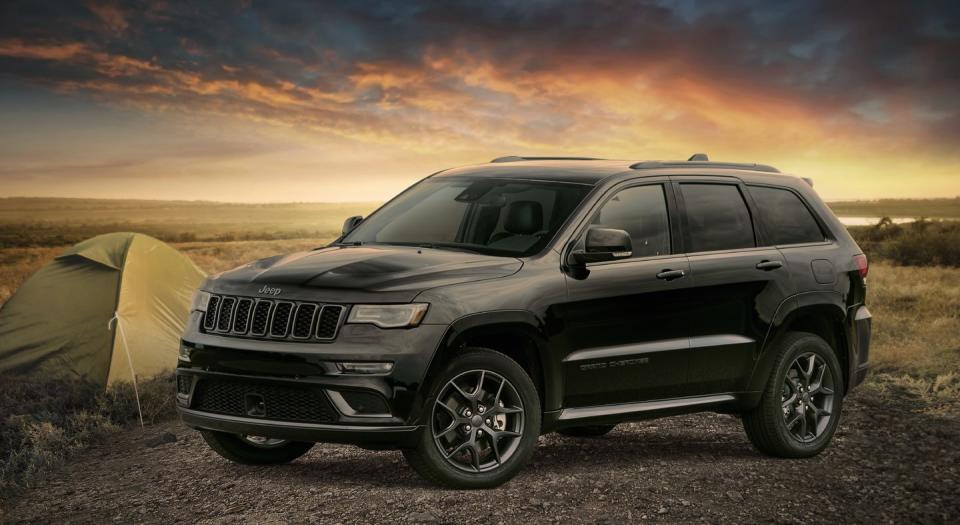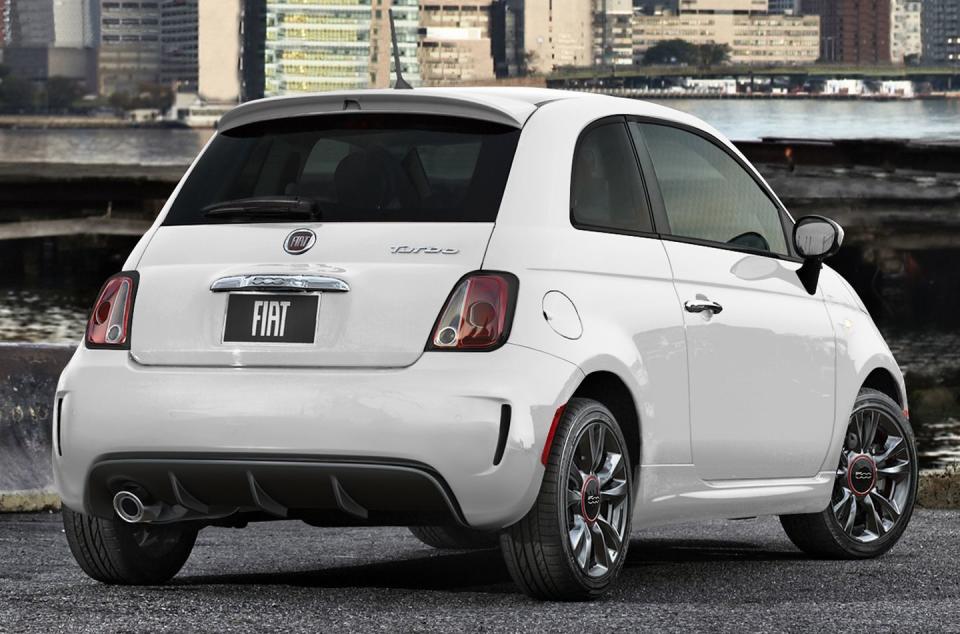Here's What U.S. Auto Sales Looked Like in 2019

Auto manufacturers hit their goal—17 million sales for the year.
But is it a bad sign for the economy that sales were so flat (or down) for many?
There's no doubt that, despite strong economic conditions, many automakers are acting like there's a crisis looming.
Automakers hit the 17 million sales mark for the fifth straight year in 2019 as the U.S. economy continued to grow and avoided the recession many investors had feared. But two dozen car brands either fell behind or ended the year with only modest gains—and if 2019's rash of industry cost-cutting is any indicator, automakers are prepping for a worst-case scenario that has yet to come.
According to Automotive News, which includes medium-duty truck sales from the Big Three that are actually not considered light-vehicle vehicles, total U.S. sales were 17.1 million. WardsAuto subtracts an estimate of those medium-duty trucks—Ford, for example, included 63,000 of them among all F-series pickups—and also doesn't estimate sales for exotic brands like McLaren, which had a bang-up year (a 67 percent increase).

So between AN's17.1 and WardsAuto's "just under" 17, we'll split the difference and call it an even 17 million. This is impressive momentum for an industry that reached record-high sales of 17.5 million in 2015 and topped that number again in 2016. Since then, U.S. vehicle sales have floated between 17.2 and 17.4 million.

Success
Among mainstream nonluxury automakers, Ram posted the biggest year-over-year gain at 18 percent. No other brand came close. Kia recorded a solid 4 percent gain thanks to the new Telluride, which picked up slack for mild decreases in sales of the Forte, Optima, and Soul. Hyundai, Subaru, and Volkswagen—enriched by double-digit increases for the Atlas, Tiguan, and Jetta—finished with a three. Mitsubishi, pushed by the compact Eclipse Cross and sustained demand for the larger Outlander, hit its best sales in 13 years at 121,046 cars sold.

Among luxury brands, Genesis more than doubled its sales with 21,233 cars sold (though without a full year of G70 sales in 2018, that was to be expected given the new company's previous two-sedan lineup and its heavy focus on establishing dealer franchises). Volvo celebrated a 10 percent gain with 108,234 cars, its best in 12 years. The XC90, which was up 13 percent, continues pulling in more customers in its fifth model year. Lincoln shot up 8 percent due to the Nautilus, Navigator, and new Aviator—the latter having one of the nicest interiors in a luxury SUV. Porsche, to no one's surprise, rose 8 percent without any credit from the new 911. The Cayenne almost doubled to 19,001 units, marking Porsche's 10th consecutive year of sales increases. BMW also took home 4 percent.

And Not
As good as that all sounds, 16 car brands fell behind and another nine ended their year with modest gains of 2 percent or less. The worst was Fiat, which plunged 41 percent and announced it would drop the 500 hatch from the U.S. market for the 2020 model year. (We won't count Smart, which was dying last year and is now really dead for 2020.) Chrysler and Alfa Romeo each slid 23 percent, Infiniti sank 21 percent, and Mini dropped 17 percent.

Jeep, that bastion of all truck holiness, dipped 5 percent even as the nine-year-old Grand Cherokee posted an 8 percent gain, the only increase in Jeep's seven-model lineup (if you don't put the Gladiator's 40,047 sales in with Wrangler sales, which Fiat Chrysler itself does not). Mazda was down a disappointing 7 percent despite releasing a beautiful rendition of its new 3 sedan and hatchback. Dodge fell 8 percent, despite the ancient (but hot-looking) Charger surging 21 percent. The only things popping at Nissan were the Kicks and the NV commercial van. Everything else sank hard to finish the company at 9 percent down.
Ford and Chevrolet dropped 3 and 4 percent, plus Toyota fell 2 percent. Amazingly, although it will drop the Regal for 2020, Buick finished flat at 206,929. So did Honda (1,450,785), Lexus (298,114), and Audi (224,111). Mercedes-Benz and Cadillac were relatively weak with 1 percent gains, although the two can't be fairly compared in a single sentence—Benz's 358,409 sales more than doubled Caddy's.
Cutbacks for Doomsday?
By all accounts, the U.S. economy performed admirably in 2019. Stock market indexes soared, with the S&P 500 ending on a six-year high and double-digit increases for both Nasdaq and the Dow. Consumer spending continued to rise, hourly wages saw their largest percentage increase since 2016, unemployment was at 50-year lows, and gross domestic product ended the third quarter at 1.2 percent above federal projections. Automakers also reaped big savings from the Tax Cuts and Jobs Act that began in 2018, which negated the blow from U.S. tariffs on aluminum and steel that put a sizable—but not devastating—dent into various parts of domestic auto manufacturing. As a share of all federal tax revenue, corporations paid less in 2019 versus individuals and benefited from higher after-tax profits—an average of $1.85 trillion in the third quarter, according to the Wall Street Journal—than in the past three years. Even GM, which suffered billions in losses from a five-week UAW strike, should end 2019 just fine when the annual report publishes.

But automakers are worried. They've been tied up between Trump and the state of California over wildly different emissions regulations. They're decoding the USCMA—the NAFTA replacement which has yet to be ratified—which is set to disrupt their foreign supply chains by requiring more parts be sourced within the U.S., Canada, and Mexico. They've been under intense union pressure to move production out of Mexico, or as some Democrats have proposed, allow the UAW and other U.S. unions to dispute labor conditions and wages in Mexico. They're spending billions upon billions on battery-electric cars that, unlike conventional vehicles, have little indication of being profitable during their model cycles. The car market is so saturated, both in the overlapping crossover models in each manufacturer's lineup and from glut of attractive, low-cost used cars they've put on the market during these past five years.
Instead, automakers have acted like they're in crisis. Nissan, Jaguar Land Rover, GM, Ford, Daimler, and Volkswagen began shedding thousands of jobs each during 2019—and they're still not done. Budgets everywhere have been slashed. More factories closed. China is slowing, and Europe, compounded by a sudden shift from diesel cars, is a thorn. And just as companies did after the 2009 recession, it appears automakers may be stockpiling their cash in case the economy crashes again. Here's to a happy, perpetually uncertain 2020.
You Might Also Like

 Yahoo Autos
Yahoo Autos 